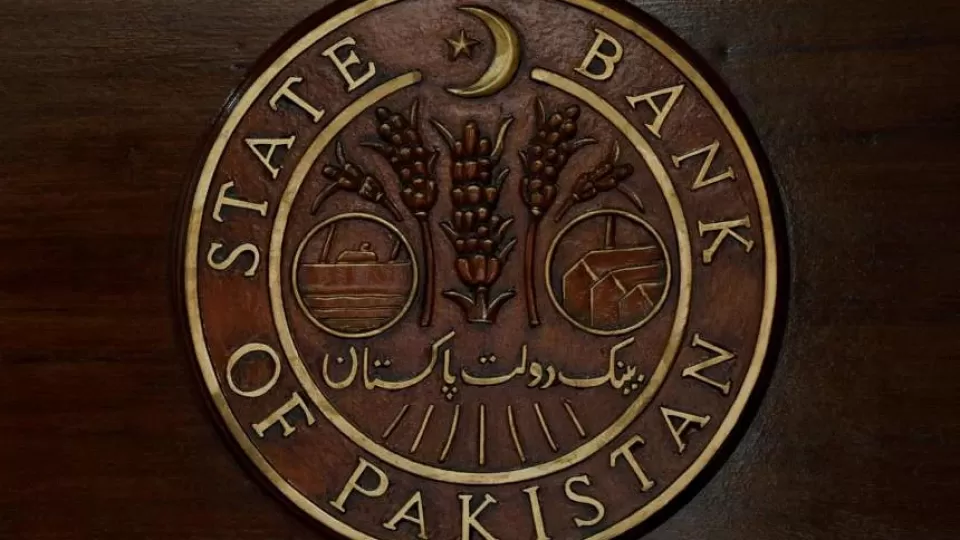July 26, 2022
ISLAMABAD – In the absence of enough forex reserves, the State Bank of Pakistan (SBP) may only continue watching from the sidelines as the rupee falls from one all-time low to another over the past few months, and most recently during the week that ended on July 22.
Meanwhile, growing political instability becomes the springboard of all kinds of speculations against the rupee’s health as well as Pakistan’s prospects of dodging what to some sceptics appears to be an “imminent” threat of defaulting on sovereign loans.
In addition to political instability, structural weaknesses of the external sector, higher global prices of fuel and food commodities, the rise of the US dollar against major currencies, geopolitical challenges facing Pakistan and the delay in the revival of the International Monetary Fund’s (IMF) lending, all played their part in making the rupee weak and vulnerable to speculation-driven attacks.
The rupee lost 8.25 per cent of its value against the US dollar within a week: it closed to an all-time low of 228.36 per dollar on 22nd July from 210.95 per dollar on 15th July. This massive decline in the rupee’s value within a week, in line with the ongoing trend, is bound to fuel inflation further and upset all earning/spending projections of households and businesses alike. Prominent business lobbies, including the Pakistan Business Council, urge politicians to agree upon a five-year economic reforms agenda to ensure and defend the economic sovereignty of the country.
The currency’s value will continue to be determined essentially based on forex demand and supply, which the SBP can influence only with support from the IMF or friendly countries
But the high drama played in the elections of the chief minister of Punjab on July 22 indicates politics in Pakistan may remain oblivious to the gravity of multiple economic challenges facing the country.
Between April 7 (when the then Prime Minister Imran Khan was ousted from power) and July 22, the rupee lost 21.3pc value against the US dollar both due to yawning trade deficit and the growing political instability and uncertainty.
Now, the key question is how long will the rupee continue to decline?
Nobody can answer this question. Not even the government of Pakistan, nor the SBP. Things will become a bit clear when the IMF’s board will hopefully approve the revival of its lending programme and release about $1.17 billion for Pakistan, sometime in the first half of August. Even before that China, Saudi Arabia or the UAE may consider placing a few billion dollars funds in the SBP account as Pakistan has already reached a staff-level agreement with the IMF and only its formal approval from the IMF’s board is awaited.
If that happens and our forex reserves are augmented substantially that may create room for the central bank to lend “limited” support to the rupee. (SBP’s forex reserves gradually fell to $9.328bn on 15th July (or equal to one-and-a-half month of goods imports) from $11.425bn at the end of March 2022).
In a market-driven exchange rate regime that Pakistan is currently pursuing and that is being “watched” closely by the IMF, the SBP cannot keep the rupee’s value artificially high. All it can do is to “smoothen out extreme volatilities”. This means that the SBP can sell dollars into the market when the high demand for the greenback causes the rupee to lose too much value in a single trading session or a couple of consecutive sessions. This also means that the amount of the dollars thus pumped into the market will have to be bought back by the SBP at the end of the month or the end of a quarter in exceptional cases.
This means that the rupee’s value will continue to be determined essentially based on forex demand and supply, even if it keeps licking one all-time low after another during a certain period of high political instability, and eventually, it can regain its lost value if and whenever forex supplies in the market improve substantially.
That takes us back to the structural causes of our Balance of Payments (BoP) weaknesses. In our balance of payments, the two main non-debt-creating sources of forex inflows are (1) remittances and (2) exports of goods and services. And our two main sources of outflows of foreign exchange are (1) imports of goods and services and (2) external debt servicing.
It doesn’t take a genius to understand that if our total import bill of goods and services continues to eat up more than 90pc of the forex earnings through remittances, total exports and foreign investment then what will be left to service external debt? Almost nothing. That means the government will continue to borrow through foreign debt in any form —sovereign funds, international commercial loans and most importantly BoP support fund from the IMF just to avoid external loan default and to keep the central bank’s forex reserves at a comfortable level ie equal to three months’ imports of goods.
Between July 2021 and May 2022, Pakistan’s total import bill of goods and services stood at ($65.462bn + $10.284) $75.746bn, according to the SBP. Against this, our forex earnings from remittances and exports of goods and services totalled ($28.410bn+$29.333bn+$6.318bn) $64.061bn. Now, do we need any other evidence of what is the actual problem with Pakistan’s external sector?
For a long time to come, the country may have to continue external borrowings, just to retire or service old external debts and to keep bare minimum forex reserves with the SBP. Sadly, a sharp — and sustainable— rupee recovery may remain elusive in near future.
Published in Dawn, The Business and Finance Weekly, July 25th, 2022


